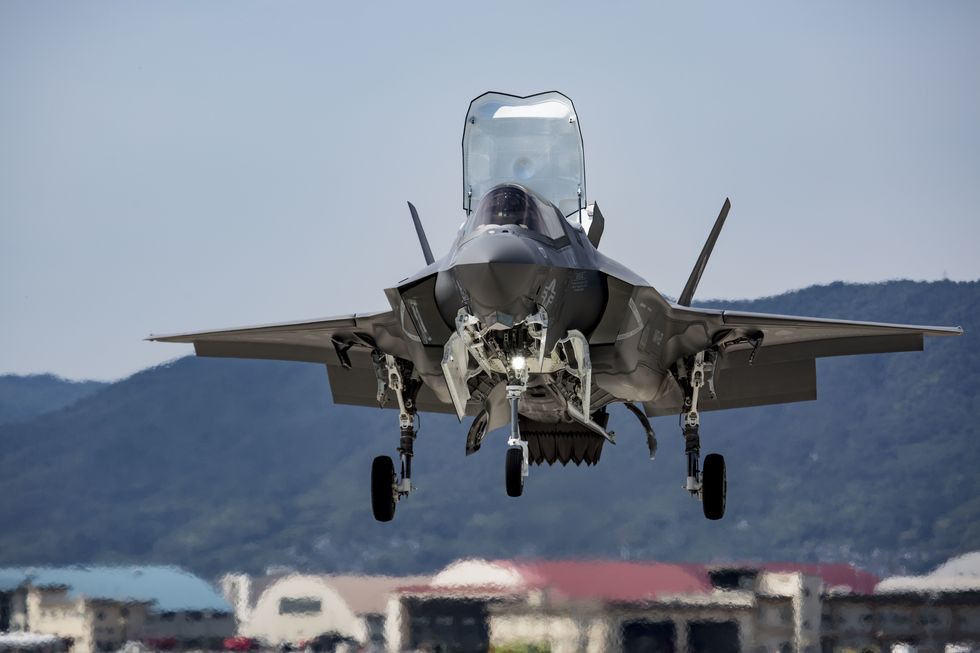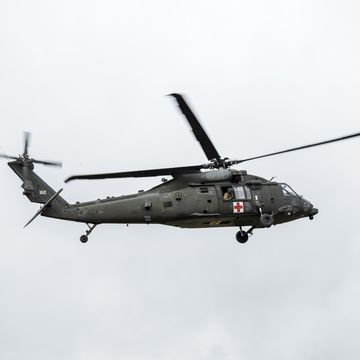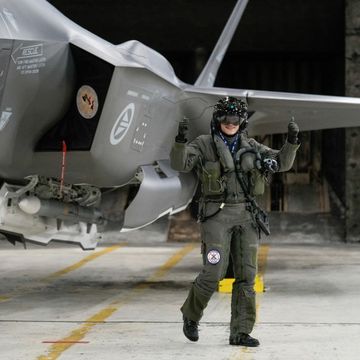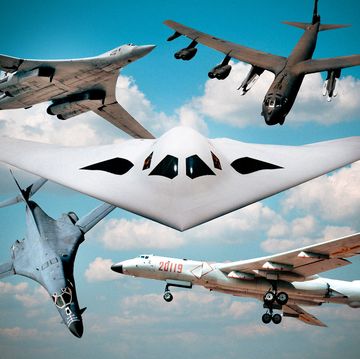The Pentagon may end up with about 200 F-35s that remain unready for war. Because of defense budget headaches, the money to fix them up is going somewhere else.
The Armed Services are presently spending their money on brand new Joint Strike Fighters. That means up to $40 billion in older planes—built before the F-35 design was complete—could forgo upgrades meant to bring them up to the latest standard.
Dan Grazier, an analyst for the Project on Government Oversight, explains in The National Interest that 108 early model F-35s may remain non-combat-rated—that is, unprepared for combat and suitable only for air shows and training missions. There are also 81 early model Navy and Marine Corps F-35s in need of upgrades, which adds up to 189 F-35s that can't go to war.
The root of this predicament is a procurement model known as concurrency. The Pentagon and Lockheed Martin knew that the F-35 program, which planned to deliver variants for the Air Force, Navy, and Marine Corps, would be immensely complex, requiring many years and billions of dollars to complete. While the basic prototype first flew in 2000, the F-35's development took a total of more than 15 years. The final version of the F-35's software, Block 3F, is still undergoing product testing.
To let the manufacturing base get a head start on making F-35s, and for the services to get their hands on the plane ASAP, they and Lockheed Martin collectively agreed to concurrently build F-35s while still finalizing their development. That means the early birds would need to be brought up to the final standard at a later date.
The earlier F-35 models in question are all built to the incomplete Block 2B standard, two levels lower than the final Block 3F, and there are 213 software and hardware differences between the two standards. Block 2B provides some but not all of the F-35's combat capability. The Air Force accepted 108 Block 2B F-35As, while the Navy and Marines collectively accepted another 81 F-35B and -C models.
This new money-saving proposal would keep the 108 Air Force F-35s (which cost taxpayers a staggering $21.4 billion, according to Grazier) at a non-combat-rated status. The Project on Government Oversight contacted the F-35 program office (which manages all three variants of the plane) and Lockheed Martin asking when the 81 Navy and Marine Corps early version jets would be upgraded to Block 3F and never got a response.
What happened to all the money for these upgrades? The Armed Services are currently spending their procurement money buying the latest F-35s, and with limited defense dollars to go around, the services are buying the jet in large lots to lower costs. If the Pentagon diverts monies from buying new jets to upgrading the old ones, it will have to buy fewer new jets at higher prices per plane. However, the quest to lower prices today may mean that 189 airplanes—a $39.4 billion investment—end up sub-par.
It's important to note that the this is just one option floated by the F-35 office and may not come to pass. Even if it is implemented, the F-35's production lines will crank out planes for decades, and the upgrades could be performed at a later date when money is available. What is for certain, however, is that the concurrency model has been a persistent, decade-long headache for everyone involved. Next time, maybe the Pentagon should avoid buying a warplane until it is truly ready for mass production.
Update: A U.S. Air Force official tells Popular Mechanics that, "the Air Force plans to upgrade all aircraft in question to Software Block 3F."

Kyle Mizokami is a writer on defense and security issues and has been at Popular Mechanics since 2015. If it involves explosions or projectiles, he's generally in favor of it. Kyle’s articles have appeared at The Daily Beast, U.S. Naval Institute News, The Diplomat, Foreign Policy, Combat Aircraft Monthly, VICE News, and others. He lives in San Francisco.














